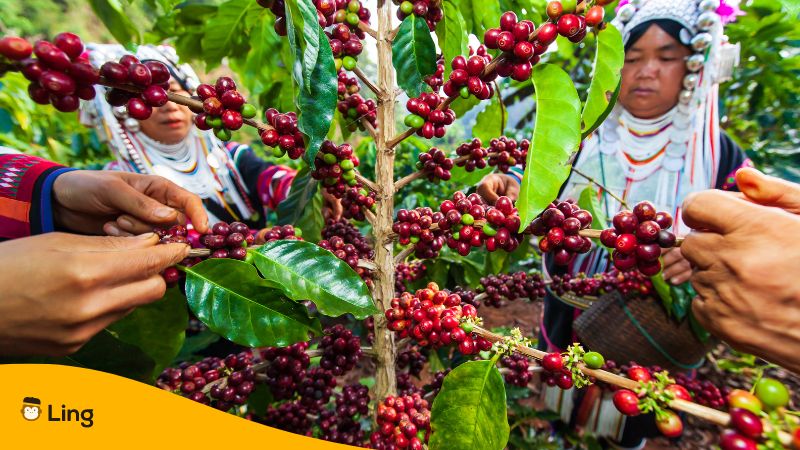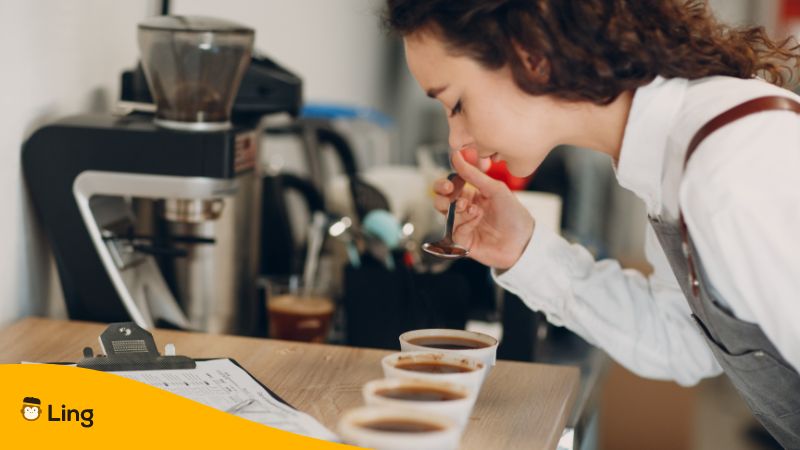Did you know that the Philippines was one of the world’s top producers of coffee or kape in the late 1800s? The country got its first coffee beans from the Spanish, who first brought these magic beans to this land. And today, the Philippines is one of the few countries that produces four varieties for it and has its own Tagalog words for coffee.
The gradual love affair between a common Filipino and coffee has become a raging fire today. And who am I to share this secret with you? Let’s just say, I know some true Filipino coffee gourmands who wouldn’t trade their strong morning ‘cafès’ for the world. I’m sure you’d have such friends too, coffee evangelists, who swear by the ‘brewed-to-perfection’ tag. Ready to learn more? Keep reading!
Coffee Culture In The Philippines
Coffee drinking and Filipino culture are inseparable. It’s a daily ritual, a warm hug in a cup, and a symbol of hospitality. For Filipinos, coffee is more than a beverage. You can say that it’s a language of connection.
In Filipino households, the day often starts with the comforting aroma of coffee brewing, a welcoming gesture for guests and family alike. From grandmothers sipping “barako” brew on quiet mornings to bustling city dwellers grabbing a quick “kapeng arabika” on their way to work, Filipino coffee unites people.
In fact, coffee shops aren’t just places to grab a caffeine fix. They’re bustling hubs where friends gather, students study, and dates blossom. You’ll find “kapihan” sessions where ideas flow as freely as the brew. For the locals, coffee just brings people closer, sparks conversations, and fuels both work and play.

Filipino Coffee Roasting
Coffee is an integral part of Filipino culture, and the process of roasting and brewing coffee in the Philippines has a unique process. Here’s a step-by-step guide to the entire coffee roasting and brewing culture in the Philippines.
Growing Coffee Beans
It all begins with coffee farmers in the Philippines growing coffee beans. They cultivate varieties like Arabica and Robusta in various regions, including Benguet, Batangas, and Sagada. The country’s diverse climate and fertile soil contribute a lot to the coffee’s unique flavors.
Harvesting
Coffee cherries are handpicked when they are ripe and red. This meticulous process ensures that each day only the best cherries are selected for processing. It’s hard work, but it’s a tradition in the Philippines.
After harvesting, the coffee cherries go through a process called “pulping.” The outer skin is removed to reveal the beans inside. These beans are then fermented, washed, and dried. Once dried, the beans are sorted and graded. The highest-quality beans are selected for specialty coffee, while others may be used for commercial blends.

Coffee Roasting
The real magic happens when it’s time to roast the coffee beans. Coffee roasters in the Philippines take pride in the details of their craft. They use traditional methods like wood-fired drum roasters or modern machines, depending on their preference.
Roast Profiles
Coffee beans can be roasted to various levels, from light to dark. Filipinos often prefer medium roast profiles to bring out the beans’ unique flavors. The aroma of roasting a coffee bean often fills the air, and it’s an enticing experience.
Once roasted, the coffee beans are ground to the desired consistency. The grind size depends on the brewing method you plan to use. For instance, a coarse grind is ideal for a French press, while an espresso requires a fine grind.
Brewing
Filipinos have various ways of brewing coffee, but the most popular methods include:
- Traditional Filipino Coffee: In the provinces, you’ll find “Kapeng Barako,” a strong coffee made by boiling coarsely ground beans in water. It’s often served with muscovado sugar or condensed milk.
- Pour-Over: Pouring hot water over a filter containing ground coffee is a method gaining popularity. It allows for precise control over the brewing process.
- Instant Coffee: Instant coffee is also a favorite among many Filipinos, especially when they’re in a hurry. Brands like Nescafé are prevalent.
- Espresso-Based Drinks: In urban areas, you can start to find espresso-based drinks like cappuccinos and lattes in coffee shops.
Tagalog Words For Coffee
Want to impress the locals? Here are some Tagalog words that may help!
| English | Tagalog |
|---|---|
| Coffee | Kape |
| Coffee Beans | Butil ng kape |
| Instant Coffee | Instant na kape |
| Freshly Brewed Coffee | Bagong timplang kape |
| Black Coffee | Kapeng barako |
| Milk Coffee | Gatas na kape |
| Coffee Jelly | Halaya ng kape |

Socialize Over A Cuppa
Finally, sit back, relax, and enjoy your freshly brewed coffee. Filipinos often love to pair their coffee with traditional snacks like “kakanin” (rice cakes) or “bibingka” (rice cake with salted egg). So, my friends, this is the delightful journey of coffee in the Philippines – from the farms to your cup and eventually to your lips. In this Asian country, coffee is not just a beverage, it’s a cultural experience that brings people together and warms the heart.
Learn Tagalog With Ling
Enjoyed this blog? As a coffee addict, I surely did! So if you’re traveling to the country, it’s important to remember that it is known for growing various kinds of coffee. So, learning Tagalog words for coffee or phrases to order coffee is definitely a good idea.
Want to learn the language a bit more deeply? Using Ling to learn such Tagalog vocabulary and phrases is one way of going about it. The app lets you learn in a fun and engaging manner. You’ll never find a dull moment in your language-learning journey when learning with Ling.
So, download the Ling app from the App Store or Play Store and get started with your Tagalog learning journey today!


































































